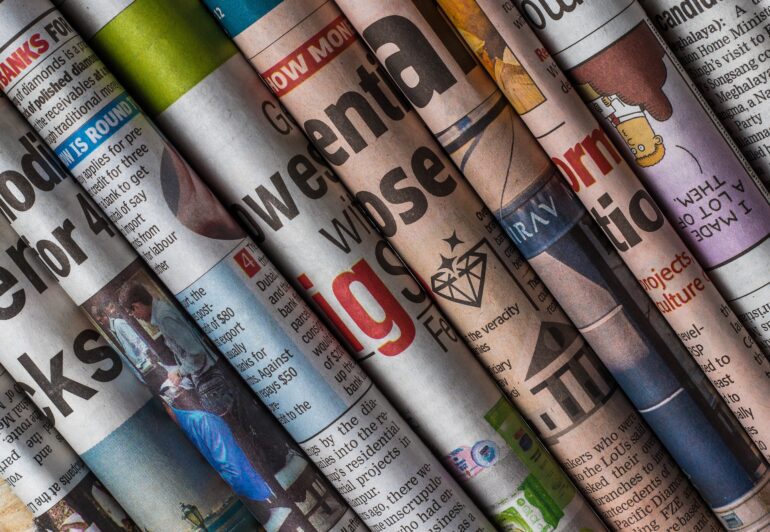TL;DR:
- Leading media firms advocate for new regulations to safeguard content from AI training.
- Open letter signed by major news and publishing organizations highlights responsible AI development.
- Concerns arise over unauthorized use of copyrighted media content by AI developers.
- Media companies call for regulations to restrict unapproved scraping of their material.
- Some media entities form licensing agreements with AI developers to control content usage.
- The New York Times revises “Terms of Service” to mandate written consent for AI content training.
- The open letter emphasizes the need to prevent AI-generated false information and biases.
- News organizations collaborate with AI developers to enhance news production processes.
- AP issues guidelines for AI tool usage, promoting technological understanding within bounds.
Main AI News:
In a resounding call to action, prominent media conglomerates are spearheading a movement for the formulation of fresh legislation aimed at safeguarding their content against potential misuse within the realm of artificial intelligence (AI) training.
Outlined within a recently issued public communiqué, the missive finds endorsement from the upper echelons of distinguished news and publishing establishments. Notable signatories include dignitaries from Associated Press (AP), Gannett, and the News Media Alliance—an advocacy body representing an extensive consortium of media disseminators. The endorsement also extends to key representatives from Getty Images, the National Press Photographers Association, and Agence France-Presse.
Embracing a stance in favor of the “responsible” evolution and application of AI systems, these organizations collectively extol the innovative capacities of AI tools. Among them, the emergence of “chatbots” stands noteworthy, capable of generating human-grade prose based on succinct textual commands. Such AI wonders often find themselves under the banner of “generative AI” or “expansive language models.”
Yet, woven into this narrative is a poignant call for the establishment of regulations expressly designed to “shield the reservoir of content” that fuels the mounting array of AI tools under development. Herein lies the media fraternity’s apprehension—the apprehension of AI developers leveraging their published content sans proper authorization. With copyright protections enshrining media content, these establishments are lobbying governments worldwide to orchestrate statutes that curb unsanctioned exploitation of their intellectual property.
The terrain traversed by AI developers is one that demands copious volumes of data to cultivate systems capable of yielding human-equivalent outcomes. This necessitates a trawl through publicly accessible websites—a process colloquially termed “scraping.”
Herein surfaces the crux of the argument articulated in the open letter—a contention that the act of scraping affords AI developers unrestricted access to their cherished media assets. This acquisition of media content empowers them to engineer linguistic models that embellish their AI tools and commercial pursuits.
While some media beacons have inked licensing accords with AI developers—granting the latter the green light to glean content—others have taken an alternate route to impede data collection. Emblematic of this is The New York Times, which recently revamped its “Terms of Service” pact to encompass novel guidelines tailored for the AI landscape.
Embedded within this fresh directive is a mandate stipulating that AI developers must solicit explicit written consent before utilizing any content to train language models. This protocol casts a wide net, encompassing diverse content manifestations, ranging from textual compositions and images to auditory and visual materials.
However, the open letter doesn’t halt content protections; it confronts another conundrum miring AI, especially chatbots—the propensity to propagate misinformation, masquerading as immutable truth. The plea extends to AI developers, urging them to infuse their systems with countermeasures designed to avert the propagation of fallacious claims.
It’s a pivotal crossroads where AI-rendered news and media stand poised to reshape information dissemination, yet the specter of distorted facts and biased narratives looms. The open letter candidly recognizes that these AI-sired language models have the capacity to perpetuate deep-seated prejudices against marginalized and underrepresented communities.
As the news cosmos embarks on a transformative odyssey, countless news entities are embroiled in experimentation with generative AI tools. This quest is underpinned by a mission to ascertain how these technological marvels can optimize the news production landscape. An epoch-defining alliance between leading news purveyors and AI architects materialized last month, fueled by a shared ambition to equip journalists with novel tools to amplify their efficacy.
AP, an indomitable stalwart, has unveiled a fresh framework governing AI tool usage across its multifarious departments. The guidelines, explicitly forbidding the deployment of such tools to engender publishable content and visuals for the news agency, underscore the shifting contours of AI’s integration with journalism.
Yet, even as boundaries are delineated, AP underscores the imperative for its workforce to acquaint themselves with the technology, leveraging it to augment their endeavors—always mindful of the stipulated parameters.
In this epoch of ceaseless innovation, the amalgamation of media and AI reverberates with transformative potential, calling for careful stewardship to uphold the integrity of information and ensure a responsible AI-infused media landscape.
Conclusion:
The media industry’s call for stringent regulations to protect content from AI training reflects its determination to balance innovation with content integrity. As media companies engage in licensing agreements and redefine usage parameters, the market can expect a more controlled AI integration that preserves the accuracy and authenticity of information dissemination. This proactive approach demonstrates the industry’s commitment to shaping the future of AI-infused media responsibly.

